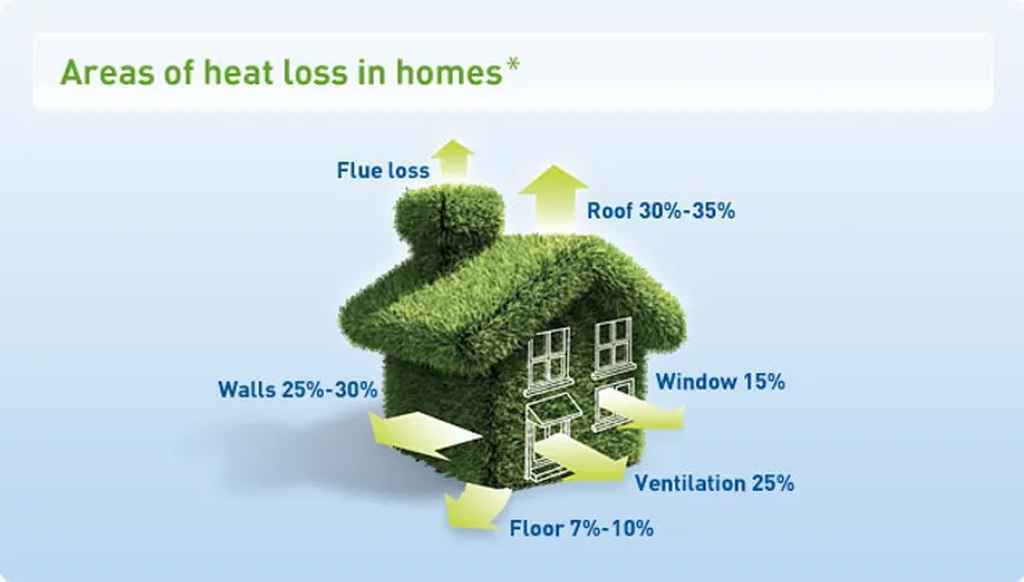Cellulose insulation: What it is
Cellulose insulation is made from recycled paper and contains nontoxic Borate, an acid produced in nature, which acts as a flame-retardant and additionally makes cellulose pest- and mold-resistant. It is by far the least polluting and most energy efficient of all applied insulation materials.
How cellulose works
Cellulose insulation is applied by being blown into exterior or interior wall cavities and into areas such as attics and enclosed crawl spaces.
In existing buildings with closed walls, blown-in cellulose is applied dry. In new construction and for extensive renovations, where there are open cavities, a damp-spray or dense-pack application is used. In either type of application, dry or damp-spray, cellulose flows through metal studs, around pipes and drywall seams, eliminating voids. Air circulation is dramatically reduced; higher levels of efficiency are achieved.
Cellulose insulation and the return on investment
The cost of installing cellulose is competitive with carefully installed fiberglass, and the gains in energy efficiency and overall comfort make cellulose insulation a smart, dependable long-term investment.
“In contrast to fiberglass, cellulose has a better resistance to air flow and prevents the upward movement of air caused by temperature differences (the R-value of cellulose actually improves during cold weather). Heat flow problems associated with fiberglass make cellulose an attractive alternative.”
—Natural Resources Defense Council-
“Calculations showed that cellulose tightened the building 36% to 38% more than fiberglass. Most significantly, after three weeks of monitoring, the cellulose-insulated building had used 26.4% less energy to heat than the fiberglass building.”
–College of Architecture and Planning, University of Colorado Denver /Boulder-
- Cellulose insulation manufactured from recycled paper is the least polluting and most energy efficient
- Cellulose has the highest post-consumer recycled content. The fiberglass industry averages 35%
- recycled glass, while the cellulose industry averages a minimum of 75% recycled content
- It takes more than 10 times more energy to produce fiberglass insulation as cellulose insulation
- Due to air circulation and natural convection, the R-value of blown in fiberglass insulation
- decreases by as much as 50% as the temperature drops from 45º degrees Fahrenheit to 18º degrees Fahrenheit.
- In contrast to fiberglass, cellulose has a better resistance to air flow and prevents the upward movement of air caused by temperature differences {the R-value of Cellulose actually improves during cold weather}. Heat flow problems associated with fiberglass make cellulose an attractive alternative
- Substantial and well-documented public health threats are associated with fiberglass. Fiberglass insulation is required to carry a cancer warning label in compliance with OSHA’s Hazard Communication Standard.
- No adverse health effects from cellulose insulation have been identified.
–This is a summary of an extensive Natural Resources Defense Council (NRDC) report–

#blownin #insulation #beantown #cellulose #paper #fireretardant #energyefficient
